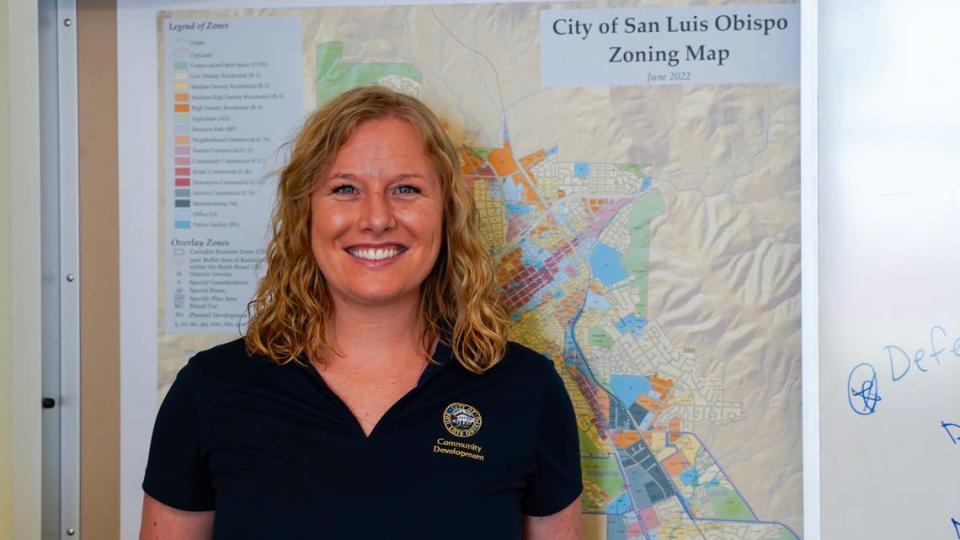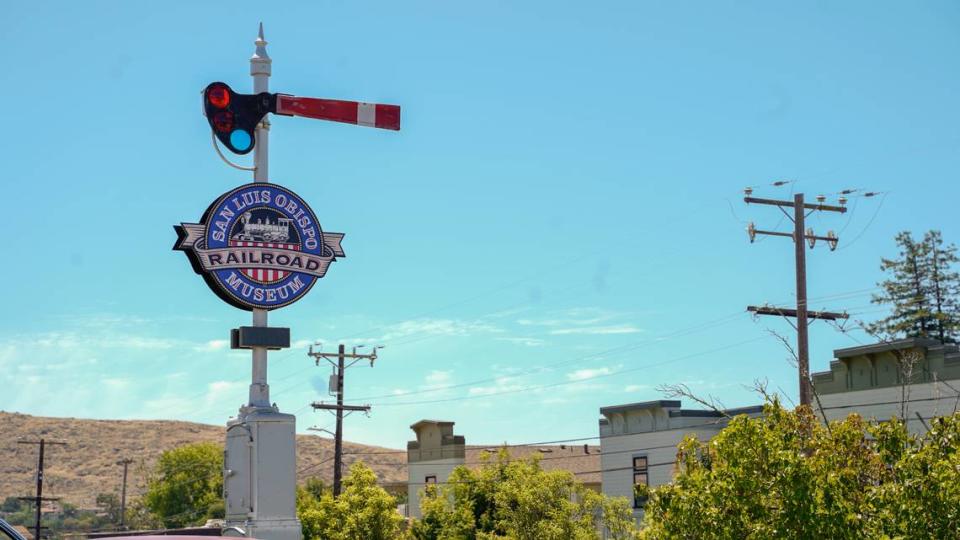SLO is closing overnight parking site for homeless people. Here’s what will replace it
The city of San Luis Obispo is closing its overnight parking site for homeless people — and trying a new tactic to shelter those living in their vehicles.
The Railroad Square Safe Parking Program, which opened in late 2021, will shut down Aug. 27, according to SLO homelessness response manager Daisy Wiberg said.
In its place will be a new rotational program that moves the location of the safe parking site to a different host each month.
On July 12, the San Luis Obispo Planning Commission approved a conditional use permit establishing Community Action Partnership of San Luis Obispo County as the program administrator.
Now the city needs local faith-based organizations and private and public property owners to volunteer their parking lots for folks in need of overnight stays.
“If we can partner with the faith community and whoever expressed a real desire to partner and to find ways to serve the unhoused community, we felt like this is a great partnership opportunity,” Wiberg told The Tribune. “This rotating model is our next step in the evolution of this safe parking program.”
Here’s what to expect from the new program, which is projected to kick off Oct. 1.

Why is Raiload Square parking site closing?
The city’s Railroad Safe Parking Program, operated by CAPSLO, was established during the COVID-19 pandemic as part of the state’s goal of sheltering more homeless individuals during the health crisis.
The program only hosts guests overnight, between the hours of 7 p.m. and 7 a.m.
So far, the program has connected 36 individuals or households to permanent housing, reunified nine individuals with families and helped five individuals find jobs, according to a news release from the city.
However, its prolonged usage at Railroad Square has caused parking issues and disruptions to nearby businesses and Amtrak customers, Wiberg said.
“After a little over two years of using that site, we have really been researching best practices across the state and looking at safe parking models (like) this dispersed model,” she said.
The city is currently looking for an interim location for the parking program to bridge the gap between the Railroad Square program’s Aug. 27 close date and the expected Oct. 1 opening date for the rotating program.

How will new safe parking sites learn from past programs?
The key distinction between the city’s new safe parking program and others such as the Railroad Safe Parking Program and San Luis Obispo County’s Oklahoma Avenue safe parking site is the rotating location.
Each location in the new rotational program will host the safe parking site from 7 p.m. to 7 a.m. for one month. After that, a new location will open up for overnight parking.
Doing so prevents the parking site from becoming a permanent fixture in the neighborhood, and keeps participants from envisioning the site as long-term housing, Wiberg said.
For instance, some residents who prefer living in cars or recreational vehicles came to see the Oklahoma Avenue parking site as a long-term housing solution rather than a transitional step into housing, providing little incentive to move new residents through the case management and housing process.
According to a grand jury report on living conditions on the county’s parking site, of the 117 households that were participating in the program as of the end of November 2022, only 17 saw a “positive exit” to permanent housing — around one household per month of operations.
Wiberg said the new rotating model take inspiration from Fremont’s Safe Parking Host Site Program, which rotates through five faith-based locations, and the Safe Parking Shelter and Rapid Rehousing Program in Santa Barbara and Goleta, which operates 26 safe parking locations.
This new rotating model could see as many as 12 different community partners play host a parking site over the course of the year, Wiberg said.
Doing so will require significant community engagement, but will keep the burden on each host site relatively low, Wiberg said.
A rotating safe parking site isn’t without its drawbacks, Wiberg said.
“The rotating aspect can create more instability for the participants in terms of having to rotate locations every month,” Wiberg said. “That’s something that we’ve tried to really talk with (participants) about, and to help them and our community members understand that we’re balancing kind of multiple priorities and needs.”

City looking for volunteers willing to share their property
Currently, the city has yet to identify participants to run the rotating sites, Wiberg said.
So far, three faith-based organizations are in talks with the city to use their properties as host locations, and are working through the process of meeting the program’s criteria, Wiberg said.
Wiberg said each host location will ideally serve as home to around 20 vehicles or recreational vehicles, which would require 30 to 40 parking spaces on hand.
Amenities such as trash, a portable restroom and a wash station will be required at each site, along with liability insurance, she said.
CAPSLO will provide staffing for each rotating site, and will provide onsite case management similar to the way it operated the Railroad Safe Parking Program, Wiberg said.
CAPSLO already runs the 40 Prado Homeless Services Center in San Luis Obispo, Wiberg said.
Operating the night programs at the new safe parking sites and providing day services at the shelter will give CAPLSO plenty of opportunities to engage in case management and housing assistance, she said.
Under the new program, 40 Prado can be a “starting point” for housing navigation for unhoused individuals who have vehicles, Wiberg said.
“If they are someone that owns a vehicle and wants to try safe parking, 40 Prado obviously has their own safe parking, and or now they’ll be able to refer them to this rotating safe parking program,” Wiberg said. “We see (the program) as strengthening that model and that partnership.”
Anyone looking to run a parking site for a month can contact safeparking@slocity.org for more details.

